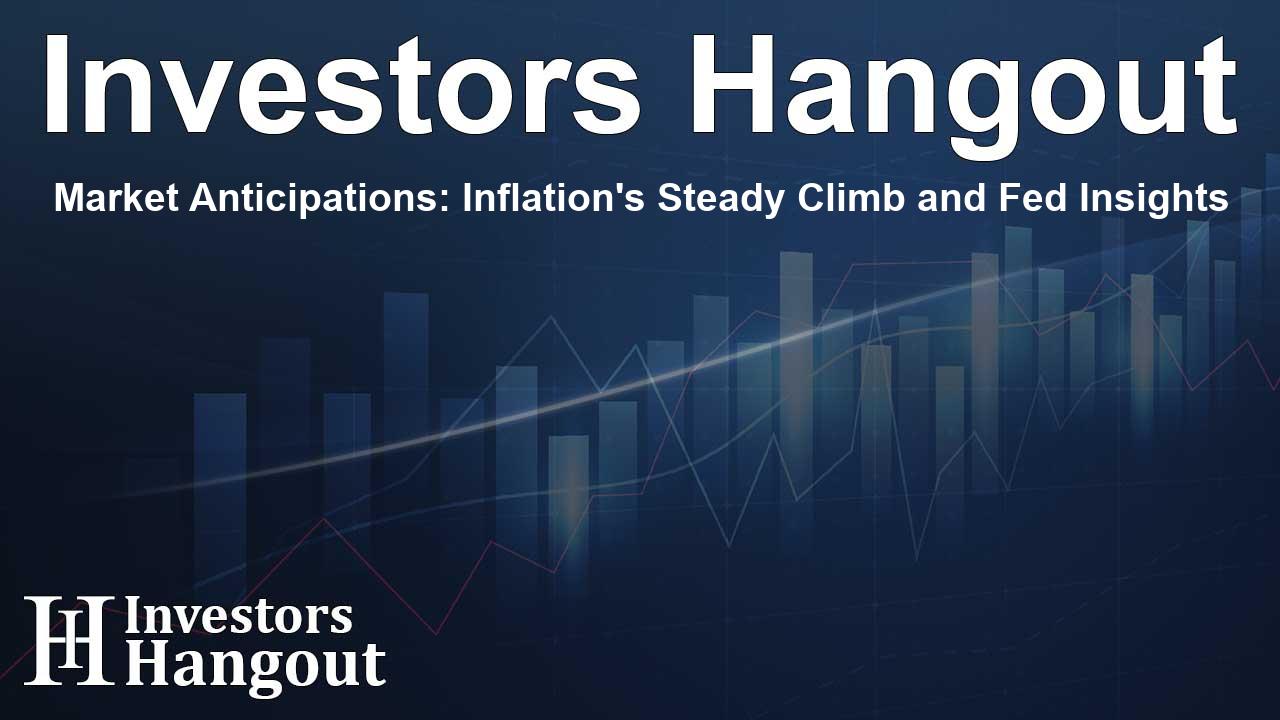Market Anticipations: Inflation's Steady Climb and Fed Insights

Understanding Market Dynamics: What Lies Ahead?
As we look ahead, markets are gearing up for the upcoming core PCE report, a crucial barometer for inflation closely monitored by the Federal Reserve. Analysts are predicting a year-over-year increase of 2.9% in July, marking the highest reading in five months, accompanied by a monthly rise of 0.3%. This data suggests a gradual uptick rather than an explosive rise, indicating persistent inflation pressures even as Fed Chair Powell prepares to navigate through complex economic conditions.
At a recent gathering, Powell's shift in tone was notable. He recognized the Fed's dual mandate is shifting focus; while inflation continues to be a concern, the more pressing issue appears to be the job market. He acknowledged the inflationary impact of tariffs but expressed confidence that these are hurdles likely to diminish quickly. The message resonating with traders was clear: Powell is inclined to prioritize job stability even as inflation metrics may indicate otherwise.
Throughout the week, various Fed officials, including Waller and Williams, are expected to voice their insights, shaping market expectations. Futures trading suggests a pathway to a potential rate cut in September, although the true challenge lies in whether inflation will cooperate with these anticipated adjustments.
The Economic Weather: Turbulence Ahead
This week’s economic landscape is anything but calm, with increasing data releases that may stir market reactions. A revised report on Q2 GDP will reveal crucial information about consumer spending—the main driving force behind the economy in recent months. It's essential to monitor personal income data closely, as rising wages are critical for ongoing economic momentum. Any signs of stagnation in household income could indicate a swift decline in growth, shifting the narrative around necessary rate cuts from a preventive measure to one focused on damage control.
While the scenario in Canada appears dismal with Q2 GDP expected to contract by roughly 0.7%, other regions are navigating their own economic challenges. In Asia, the Reserve Bank of Australia will release insights shortly after three interest rate cuts, revealing how they perceive remaining economic support. Meanwhile, countries like the Philippines are likely to reduce rates, while India maintains a robust economic growth forecast.
The Global Economic Context: Diverse Directions
Turning our gaze to Europe, Germany's Ifo business sentiment index will soon reflect the morale of businesses as they confront growing trade tensions. The overall landscape in Europe is showing signs of strain, and further declines in confidence could compel the European Central Bank (ECB) to adopt a more reactive stance.
Taking a step back illustrates a stark picture: inflation proves challenging to tame, and tariffs now act as obstacles for economies worldwide. Powell has essentially signaled that the employment sector is the most concerning area. Market participants are now increasingly reliant on data signals from PCE reports and Fed communications to navigate uncertainties.
Tariffs and Their Implications: A Slow-Burning Challenge
Christopher Waller has repeatedly emphasized a vital concept: inflation driven by tariffs may only represent superficial fluctuations rather than a fundamental shift in economic conditions. From his perspective, tariffs serve as transient disturbances that affect prices momentarily and do not initiate a sustainable inflation cycle. He argues that while a 10% tariff might lift PCE inflation temporarily, these impacts will dissipate within a year.
Despite the temporary nature of tariff-induced inflation, underlying trends show slow economic growth of around 1.2%, with unemployment nudging upwards slightly. Waller suggests we need to acknowledge this economic drag and consider a modest rate cut to stabilize the situation.
What is crucial for traders is to remain composed; although tariffs may elevate some prices now, they do not fundamentally alter long-term inflation trends. For Waller, it is imperative to discern between the transient noise of tariffs and the broader economic trajectory that will ultimately dictate monetary policy.
The economic environment is currently facing a dual challenge of navigating tariff impacts while not losing sight of the enduring fundamentals of growth and inflation. Observations indicate that companies initially absorb tariff costs, but prolonged pressure will inevitably lead to adjustments in consumer pricing. This occurs as corporate margins tighten and inventories deplete, prompting businesses to pass on increased costs to consumers.
Insights from Goldman Sachs illustrate the evolving situation as firms have begun to reflect tariff costs in consumer prices more explicitly. By the end of the year, many prices could rise significantly, introducing fresh complexity into the Fed's strategies as it adjusts its focus toward employment stabilization.
Conclusion: Preparing for the Road Ahead
The take-home message for traders this week is critical: trends in inflation may not be as muted as they appear. The broader economic climate, influenced heavily by tariffs and their aftermath, will shape how inflation trends evolve and how both markets and the Federal Reserve respond as we move toward year-end. The dynamics at play are intricate, and navigating the pathway ahead requires careful analysis and a proactive approach.
Frequently Asked Questions
What is the core PCE report and why is it significant?
The core PCE report measures inflation by tracking the prices of goods and services, excluding food and energy. It is closely monitored by the Federal Reserve as it reflects underlying inflation trends.
How do tariffs affect inflation?
Tariffs can temporarily increase the prices of imported goods, influencing inflation rates. However, their effects tend to diminish over time as market adjustments occur.
What economic indicators should traders watch this week?
Traders should monitor the Q2 GDP report, personal income data, and insights from Fed officials to gauge market sentiment and economic health.
How does the Fed's focus on employment impact monetary policy?
The Fed is increasingly prioritizing job stability, which may influence their decisions on interest rates, potentially prioritizing employment even in the face of rising inflation.
What implications do recent economic trends have for future rate cuts?
Depending on how inflation and job data unfold, there may be varying expectations regarding rate cuts, swinging from preventive measures to those aimed at counteracting economic damage.
About The Author
Contact Logan Wright privately here. Or send an email with ATTN: Logan Wright as the subject to contact@investorshangout.com.
About Investors Hangout
Investors Hangout is a leading online stock forum for financial discussion and learning, offering a wide range of free tools and resources. It draws in traders of all levels, who exchange market knowledge, investigate trading tactics, and keep an eye on industry developments in real time. Featuring financial articles, stock message boards, quotes, charts, company profiles, and live news updates. Through cooperative learning and a wealth of informational resources, it helps users from novices creating their first portfolios to experts honing their techniques. Join Investors Hangout today: https://investorshangout.com/
The content of this article is based on factual, publicly available information and does not represent legal, financial, or investment advice. Investors Hangout does not offer financial advice, and the author is not a licensed financial advisor. Consult a qualified advisor before making any financial or investment decisions based on this article. This article should not be considered advice to purchase, sell, or hold any securities or other investments. If any of the material provided here is inaccurate, please contact us for corrections.
